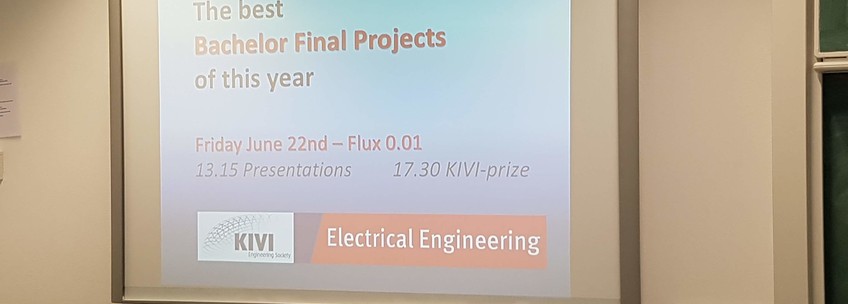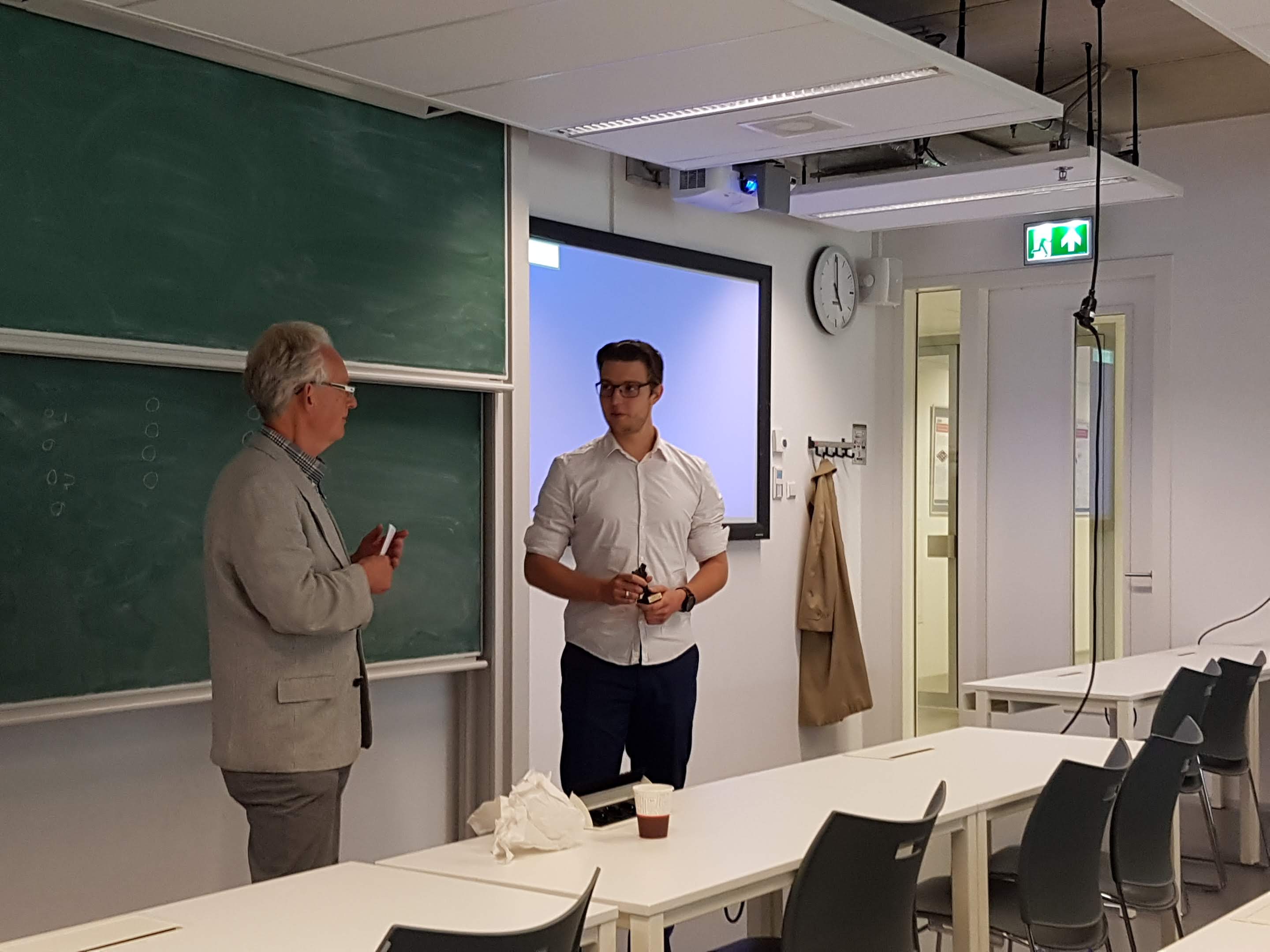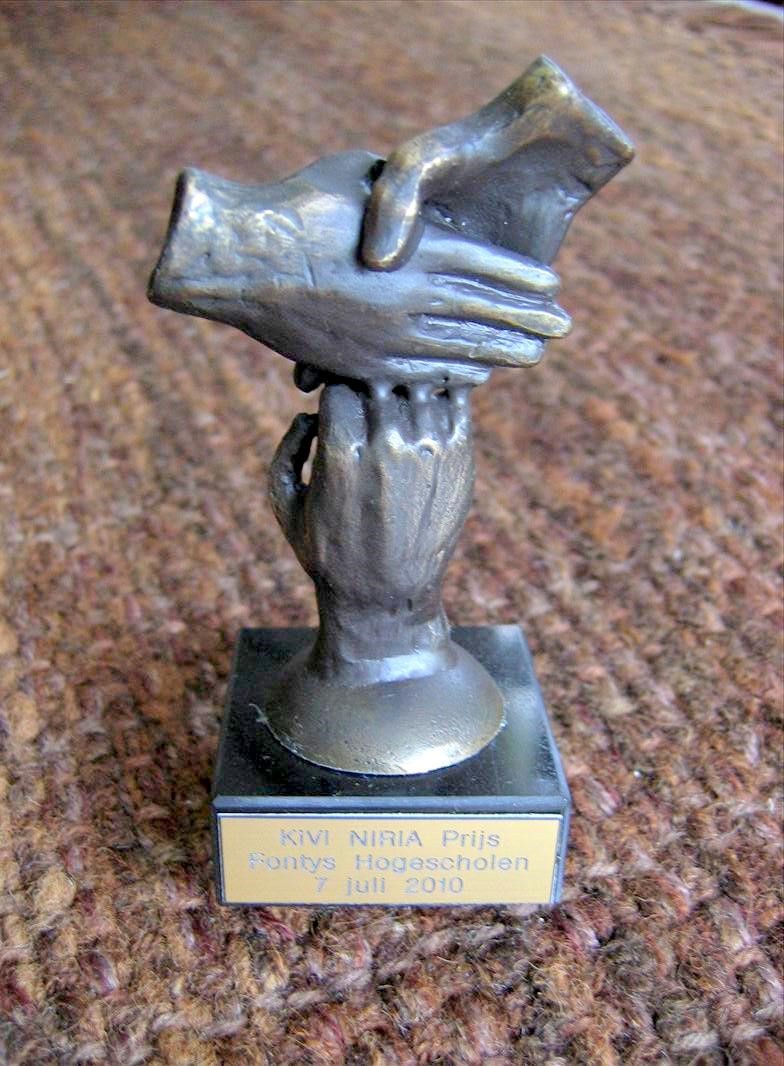
This is the season that the students finish their year just before the holidays. Therefore, at the Electrical Engineer (EE) faculty a lot of the Bachelor projects are completed. In close cooperation with EE an event is organized to give the KIVI-award to the best Bachelor project. Four projects were nominated by the EE faculty. The ranking of the projects is done by the KIVI-jury based on the Bachelor report, the presentation and the Q@A after the presentation. The projects were nominated by the four themes of the EE faculty: Care & Cure, Connected World, Smart Sustainable Society and Automotive.
The nominations were assigned to:
1. Jorn van Kampen: “Modeling and control of a buck-boost converter circuit for electric vehicles”
The work of Jorn deals with designing and simulating proper electronics and control for e-bikes to enable braking in downhill rides by charging the battery. The bidirectional power flow is provided by a buck-boost converter with appropriate control electronics. An important aspect is the modelling of the batteries used. The battery model has been verified with experiments to determine the characteristics.
2. Daniël van der Klooster: “Low cost power consumption measurement system for low power embedded and applications electronics”
There is a need for simpler test and measurement equipment when building prototype low power embedded electronics. This kind of electronics is an essential part of the products used in IOT applications. His report describes the design, simulation and (part of) the realization of such a system. The output voltage is realized by a combination of linear regulator and a switched mode converter. The device can also act as a sink of power. Large parts were implemented on a PCB and tested.
3. Jasper de Graaf: “Parallel waveguide crossing based on multi-mode interference for InP-membrane-on-silicon platform”
Photonic Integrated Chips (PIC) are maturing fast. Jaspers work contributed to the interconnections between the devices like lasers and resonators on the chip. Jasper worked on a design for a crossing of the connections. A boundary condition for such design is to minimize the space on chip needed for connections. Extensive simulations of the propagation of the light in elongated structures were done using the Multi-Mode-Interference effect. Designs were made and processed in the clean room. Testing showed that the expected performance was realized to a large extend.
4. Bart van Erp: “Deep Learning for improved fetal heart rate extraction”
Sometimes it is necessary to monitor the fetus during childbirth. This to minimize the risk of complications and damage to the fetus. One of the ways is measuring the heartrate of the fetus. The safest way is to measure the heartrate externally. But the signal will be mixed with a lot of interference and noise. To properly detect the heartrate model-based detection is used i.e. after filtering as much as possible a fit is made with a model of the heartrate. In this work an exploration of applying Neural Networks with Deep Learning. Some promising first results were obtained, but more research is needed for a reliable solution.
After some deliberation, and the remark that the quality of the work was high, the jury decided to give the KIVI-award to:
Daniel van der Klooster.
Daniel presenting his work / project Congratulations Daniel!!

The jury advised the nominees to spend a bit more attention to the context of the project, to previously done work, to already available solutions and the advantages and disadvantages.

